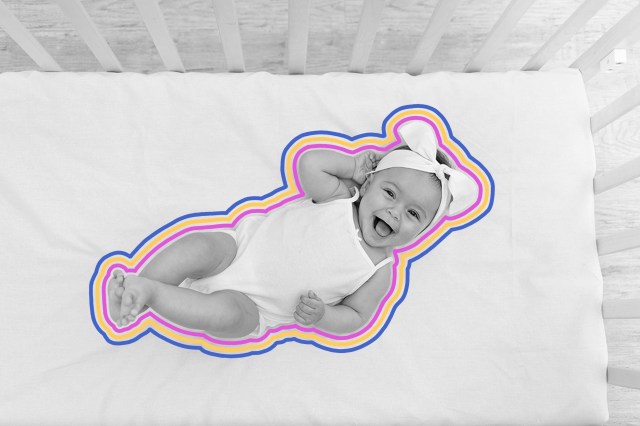
Babies Have Nearly 50% More Bones Than Adults
The typical adult human body has 206 to 213 bones. Babies, on the other hand, have closer to 300 when they’re born. Many human bones start out as multiple bones and fuse into one as flexible, connective tissue called cartilage hardens. In infants, the skull is actually six bones; they overlap to help make birth a little easier. As the baby gets older, the skull stays flexible to allow the brain to grow.
Adults do, however, have at least two bones that babies don’t: kneecaps. When babies are born, those future bones are completely made from cartilage.

Newborn Babies Have No Tears
Crying is very closely associated with babies, but oddly enough, newborn babies can’t make tears, just a lot of noise. The lacrimal gland, which produces tears, isn’t fully developed until after two weeks. It takes even more time for the lacrimal gland to produce enough liquid for the tears to actually be noticeable. Babies get their “real tears” at 2 or 3 months old.

Babies May Cry With an Accent
It seems babies soak up the language around them starting before birth. In a 2009 study, researchers recorded 60 French and German babies crying and found that subtleties in their cries mimicked each language. French cries had a slight lilt, while German babies abruptly started and dropped off at the end. This means that not only can babies recognize and mimic the musicality of their parents’ language, but they likely pick it up while still in the womb.
More Interesting Reads

Infants Have Reflexes That Adults Don’t
We all have reflexes, like putting our hands out when we fall or kicking when a doctor hits our knee with a mallet. These movements happen involuntarily. Babies are born with a ton of them, which eventually go away. One is the Moro reflex, more commonly known as the startle reflex. If a baby is spooked by something or their head moves rapidly, they’ll respond by flailing their arms out really quickly. Babies will also automatically grasp when the palm of their hand or the sole of their foot is touched. Some of these eventually become learned behaviors — like rooting when their face is touched, which helps them find a nipple — but most newborn reflexes are gone within a year, and some last only a couple of months.

Babies Can Sense Rhythm
In 2009, a group of researchers in the Netherlands played a rock drum beat to 14 newborn babies hooked up to an EEG, which measures electrical activity in the brain. Sometimes, they skipped a beat without disrupting the rhythm. Other times, they stumbled the beat in a way that broke the rhythm entirely. When they broke the rhythm, the babies had a brain response consistent with that of an adult control group. Basically, babies expected the next beat to come along in time, much like an adult would.

Babies See Red First
Newborns that can see aren’t colorblind, but their brains don’t perceive colors the same way that older children and adults do. They can also only see about 8 to 10 inches in front of their faces at first. This is why babies tend to enjoy high-contrast, black and white images — they’re easy for them to see. A few weeks after birth, red comes into focus, followed by green. Infants can see a full range of color by about 5 months old, although still not quite as vividly as adults.

Infants May Experience Multiple Senses at Once
Up to 4% of adults experience synesthesia, which means that two or more senses are tied together; for example, colors will play sound. (Notable names with the ability include painter Wassily Kandinsky, writer Vladimir Nabokov, and composer Franz Liszt.) Scientists have long suspected that infant senses are completely tied together, but since babies can’t describe their senses in the same way adults can, the hypothesis is pretty difficult to prove. One study from 2009, however, supports it. Researchers found that young infants associate shapes (a stand-in for graphemes, or written language) with colors — the most common kind of synesthesia in adults. The association wasn’t as strong with 8-month-olds, and was absent in an adult control group.












